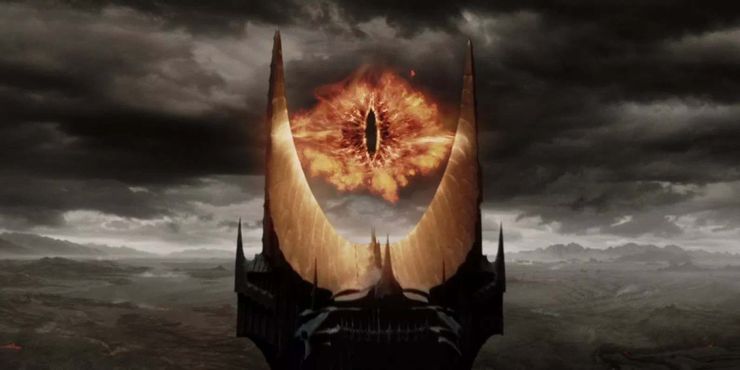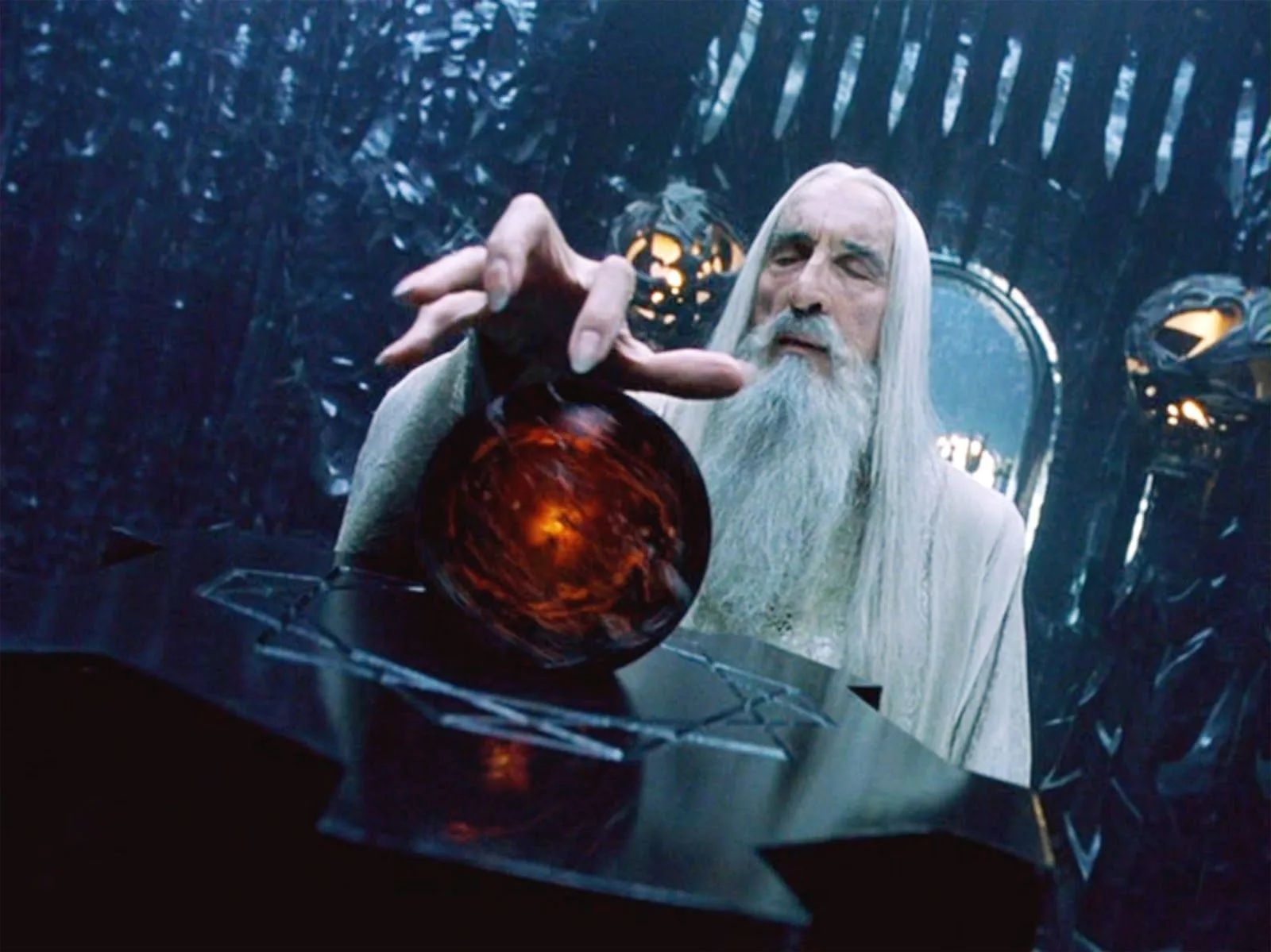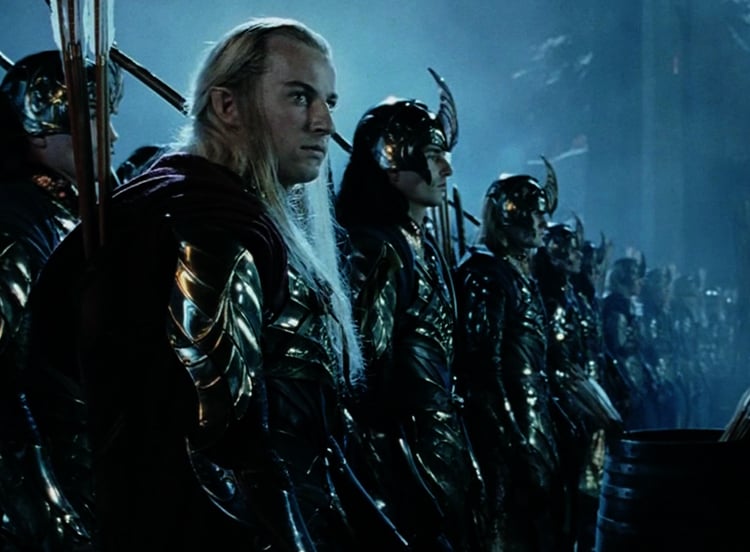I write this article not to nitpick or throw the Peter Jackson movies under the bus. On the contrary, Jackson’s Lord of the Rings films are some of my favourite films of all time. But some of the fan response to The Rings of Power has thrown me a bit off. Apart from all the racists coming out of the floorboards, a big reason why the show has faced such an uphill battle is due to all the changes and original content Amazon has injected into the show. That might seem like a red flag, and I’ll admit that’s one of the reasons why I’m very apprehensive about the series. But bear in mind that The Rings of Power is not based on any one book, like Jackson’s films were, but on the appendixes at the end of The Return of the King. As such, supplemental content was made to flesh out the world beyond simple notes. This isn’t new for Tolkien adaptations, Jackson has made numerous changes to Tolkien’s work for his Lord of the Rings films (and even more for The Hobbit). Sidebar, but Christopher Tolkien actually hated Jackson’s original films. I’m going to just list nine (for the Fellowship), as that should get the point across, but despite the changes he made, he came out on top. I’m both very excited and very nervous about The Rings of Power, but I do hope it can deliver something great.
1-Compressed Timeline
One of the main things that worries me about The Rings of Power is the compressed timeline. The Second Age takes place over thousands of years and the passage of time plays a key role in the narrative of events to come. But the show will compress these events for the sake of convenience, or else the mortal characters would need to be recast every season.

Many forget, or don’t know if they’ve never read Tolkien’s work, that Jackson also used time compression for his adaptation of The Lord of the Rings. Case in point, when Gandalf leaves Frodo in the Shire, telling him to “keep it secret, keep it safe” in The Fellowship of the Ring film, the movie implies that a short period of time has passed due to the editing. Maybe a few weeks. In the book, however, it takes Gandalf a whopping seventeen years to return to Frodo to confirm that Bilbo’s ring is in fact, the one ring. This means that when Frodo leaves on his journey, he’s 50 years old. Is this a game changer? Not really, I actually prefer the compressed timeline here, but it does show that events had to be altered when adapting Tolkien’s work.
Likewise, the prologue shows a glimpse of the battle between the Last Alliance and Mordor and makes it seem like this event is one giant battle, but it actually took place over the course of seven years. To speed this up, Jackson cut straight to the case, omitting that the battle was more like a siege.
2-Tom Bombadil, The Old Forest and the Barrow Wight
A major change in the first act of The Fellowship of the Ring includes the complete absence of Tom Bombadil, one of Tolkien’s most mysterious characters. In fact, it seems that Tolkien didn’t even have an answer to who or what Bombadil is and in the end, as Jackson would state, ““what does Old Man Willow contribute to the story of Frodo carrying the Ring? … it’s not really advancing our story & it’s not really telling us things that we need to know“. That said, Bombadil is still a beloved character from the books, mainly due to the enigma around him. Is he a god? A hobbit? A wizard?

In the novel, before arriving at Bree, Frodo and his three hobbit companions end up in the Old Forest. Merry and Pippen are subsequently captured by Old Man Willow, a sinister sentient tree that wishes to dominate the forest. In the film version of The Two Towers, in Fangorn Forest, Merry references trees that could move near the Shire, in a likely nod to Old Man Willow. Tom Bombadil saves the duo from the evil tree and comes to their rescue yet again when the four hobbits are captured by the horrific Barrow-wight in the Barrow-downs. Considering this takes up a lot of time, it’s likely for the best it was cut out, lest the film be even longer than it already is (even in the Extended Cut!)
3-No Glorfindel
One of the most important and powerful characters in Tolkien’s legendarium was Glorfindel. But Jackson completely removed him from the narrative. Gil-galad, a prominent character in The Rings of Power, has more screentime and that’s saying something as he’s in the movie for a few frames during the opening prologue.

In the novels, Glorfindel, a character who dates back to the First Age, is the one who saves Frodo from the Nazgúl (as they fear him) and brings him to Rivendell. He’s later present at the Council of Elrond to debate the fate of the One Ring, where he suggests giving the Ring to the previously mentioned Tom Bombadil. So, Jackson and his team cut out Glorfindel and gave his introduction to Arwen, who in turn brings Frodo to Rivendell while being chased by the Ringwraiths. While he was cut from the movies, I would expect his arrival in later seasons of The Rings of Power. He’s one of the most important and powerful characters in the Legendarium, with powers on the same level as Gandalf and in the Second Age, when he is resurrected, he aids Gil-galad and Elrond against Sauron. In the book, he’s also the one responsible for prophesizing that the Witch-king would fall not by the hand of man, something we know comes true in The Return of the King.
4-Elves at Helm’s Deep
Not per se a huge detail at first glance, but Jackson opted to include Elves from Lothian at the Battle of Helm’s Deep to show that Rohan wasn’t without allies. It’s a neat throwback to the Last Alliance and shows that Rohan isn’t alone despite being in Saruman’s darkness for some time.
In Tolkien’s original text though, Rohan is very much alone and receives no help from the Elves (except Legolas of course), or anyone for that matter, until Gandalf and Eomer enter the fray. However, Helm’s Deep isn’t the only battle happening at that time, as Saruman unleashes his forces upon the realms of Dwarves and Elves. Jackson naturally wouldn’t want to cut away from the Rohirrim to highlight battles with characters we don’t know, so bringing the elves to Helm’s Deep is kind of a “two birds, one stone” kind of change.
5-The Eye of Sauron
Tolkien wrote of Sauron as a giant eye wreathed in flame. But the wording was meant to be metaphorical, as there was never a giant flaming eye on top of Barad-dúr in the books. Jackson and his team opted to take Tolkien’s words literally and display Sauron as a literal eyeball wreathed in flame upon the top of Barad-dûr, complete with a lighthouse-styled field of vision.
Instead, Tolkien stated that after the One Ring was severed from his hand, Sauron’s physical form was destroyed but his spiritual self, which took on a humanoid form (as seen in The Hobbit with The Necromancer), was what was really at the top of the tower. Heck, even Gollum describes seeing Sauron during his captivity in Mordor, citing his four-fingered hand. So the whole eye thing is quite the departure from the novels. While it ultimately doesn’t change much, as Sauron is a very hands-off (heh) villain in Lord of the Rings, fans were still baffled at the whole lighthouse field of vision thing from Return of the King and is often regarded as one of the sillier changes made to Tolkien’s work. But despite that, fans got over it and the film is still considered one of the greatest ever made and would go on to win all eleven of its Oscar nominations (including Best Picture) and is tied with Titanic and Ben Hur for most Oscar wins ever. Not a bad flex.

6-Saruman’s Ring of Power and Selfish Ambition
In the films, Saruman is depicted as being an agent of Sauron, a wizard who has fallen from grace and sided with evil in a fruitful alliance. The White Wizard uses the Seeing Stone in his tower to communicate with the Dark Lord, who orders him to make him an army worthy of Mordor. Saruman breeds his own kind of Orc, Uruk-hai, who can travel the lands in daylight and begins a massive assault on Rohan.

In the books, it’s not so easy and tidy. Saruman is very jealous of Gandalf, despite outranking him, and is quite impressed with the might of Sauron. He openly sides with Sauron in Tolkien’s book, but also forges his own Ring of Power in an attempt to duplicate Sauron’s own One Ring. His ring was significantly lesser, and Saruman began looking for the One in order to have it for himself. He even lied about the possible whereabouts of the Ring to the Witch-king and the other Ringwraiths, telling them that he knew nothing of hobbits or the Shire when he knew full well that a hobbit currently was in possession of the One. In the films, it’s implied that Saruman wants the ring to give it back to his master, but the book makes it clear that he would like to be the custodian of the Ring and likely become the new Dark Lord.
7-Minimal Help From The Army of the Dead
In The Return of the King, Aragorn uses Andúril, The Flame of the West, to summon the Army of the Dead to his cause, fulfilling their oath.
In the film, they make great use of the army, utterly willing out Sauron’s forces at the Battle of the Pelennor Fields, shifting the tides very much in the favour of Gondor and company. But in the novel, the army merely wipes out the navy coming in from the east, the Corsairs of Umbar, saving Gondor from a nasty ambush. From there, their oath was considered fulfilled and Aragorn rallied the men of Southern Gondor aboard their ships and made way to the battle, which was an unexpected and devastating surprise for The Enemy and his army.
8 and 9 – The Scourge of the Shire & Saruman’s Death
Two for one! In my opinion, this is probably the biggest change Jackson made when adapting the books. In the film version of The Return of the King, the four hobbits make their way peacefully back to the Shire, Samwise gets married and they live a happy life until Bilbo and Frodo leave to go to the Gray Havens with the elves.

In the book, however, the company of hobbits returns to find a hellscape that was once their home, much as how Frodo saw it in the Mirror of Galadriel. Long story short, Saruman flees to the Shire after the events of The Two Towers and sets up camp there, poisoning the land around him with his evil. Wicked men guard the Shire and in general, it’s not the scenic destination we know it to be. The hobbits essentially form a rebellion of hobbits to reclaim the Shire from Saruman, showcasing that hobbits do indeed have a part to play in the larger conflict and they’re not woefully ignorant of larger events. This moment gives all hobbits their moment, as opposed to focusing on the exploits of the four.
Wormtongue does end up killing Saruman like he does in the extended cut of Return of the King, but also meets his end when a bunch of hobbit arrows hit him after slicing his former master’s neck.
There’s a slew of other ones, such as Gandalf not summoning an eagle helper while on Saruman’s tower (he can thank Radagast for that), Faramir helping Frodo right away without being tempted by the Ring and Gandalf’s staff getting destroyed by the Witch-king, but you get the idea. There’s a lot that was changed for the Jackson films, some of it minor, some of it major, but we all ended up loving the movies. Hopefully, we’ll be saying the same thing about The Rings of Power.



10 thoughts on “Nine Changes Peter Jackson Made In ‘The Lord of the Rings’ – ScreenHub Entertainment”